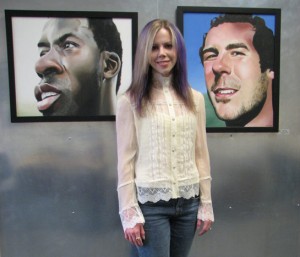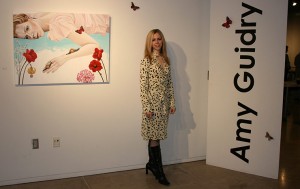I see a lot of questions regarding juried art exhibitions- to enter or not to enter, and what to enter, and which ones to enter… I thought I’d give my two cents on the issue. Personally, I like them and think they can be a great opportunity, as long as you do your homework.
Be choosey. If it’s a show in the middle of nowhere and juried by someone you’ve never heard of, pass it up. Focus your efforts on the shows that matter most to you.
That said, if you are just starting out and need to build up some exhibition experience, it may be worthwhile as long as you are spending little to nothing on entry fees or shipping.
Where is the exhibit being held? Look for a good venue, perhaps a space you’ve been interested in showing or maybe it’s a particular city of interest.
Who is the juror? Is it someone you’ve been wanting to meet or you admire their work?
What are the fees? Some juried shows have outrageous fees or some have high fees and require a high commission on top of that. Look for those that strike a balance between fees and commission rates, if there is one.
Is the work insured? If the venue does not automatically insure the work, you probably shouldn’t enter. Good venues have insurance. It’s just good business.
Shipping? This will kill it for some people, but if you want to show your work, you’re going to have to pay shipping. Find the safest, most economical way to ship your work. This will take some research and will be different for everyone depending on how you pack it and what you pack, your location, and the shipping carrier, but once you determine this, you can use that info for all other aspects of your art business.
Stay away from vanity galleries. I can’t stress this one enough. Some vanity galleries hold “competitions” and will look for a way to sucker you in to paying them thousands of dollars for your own solo exhibition. If it sounds too good to be true, it probably is. Focus on galleries and venues with solid reputations- yes, this means it will be harder to get in and the competition will be fierce, but they are legit.
Presentation is everything. Make sure you follow all directions, dot your i’s and cross your t’s. Submit your best work, make sure that if there is more than one entry, all works are consistent in style, technique, and content. Remember, the juror is seeing this out of context- they don’t know the background behind the art. What you are submitting needs to make sense to someone just getting a small peek inside your world.
Follow up. If you get into a show or better yet, win an award, be sure to send out press releases to the local media. There certainly isn’t enough art in the news, so take the opportunity to get your work featured.
————
Sign up for my monthly newsletter at: www.amyguidry.com/contact.html
Follow me on Facebook: www.facebook.com/pages/Amy-Guidry/51953219932




